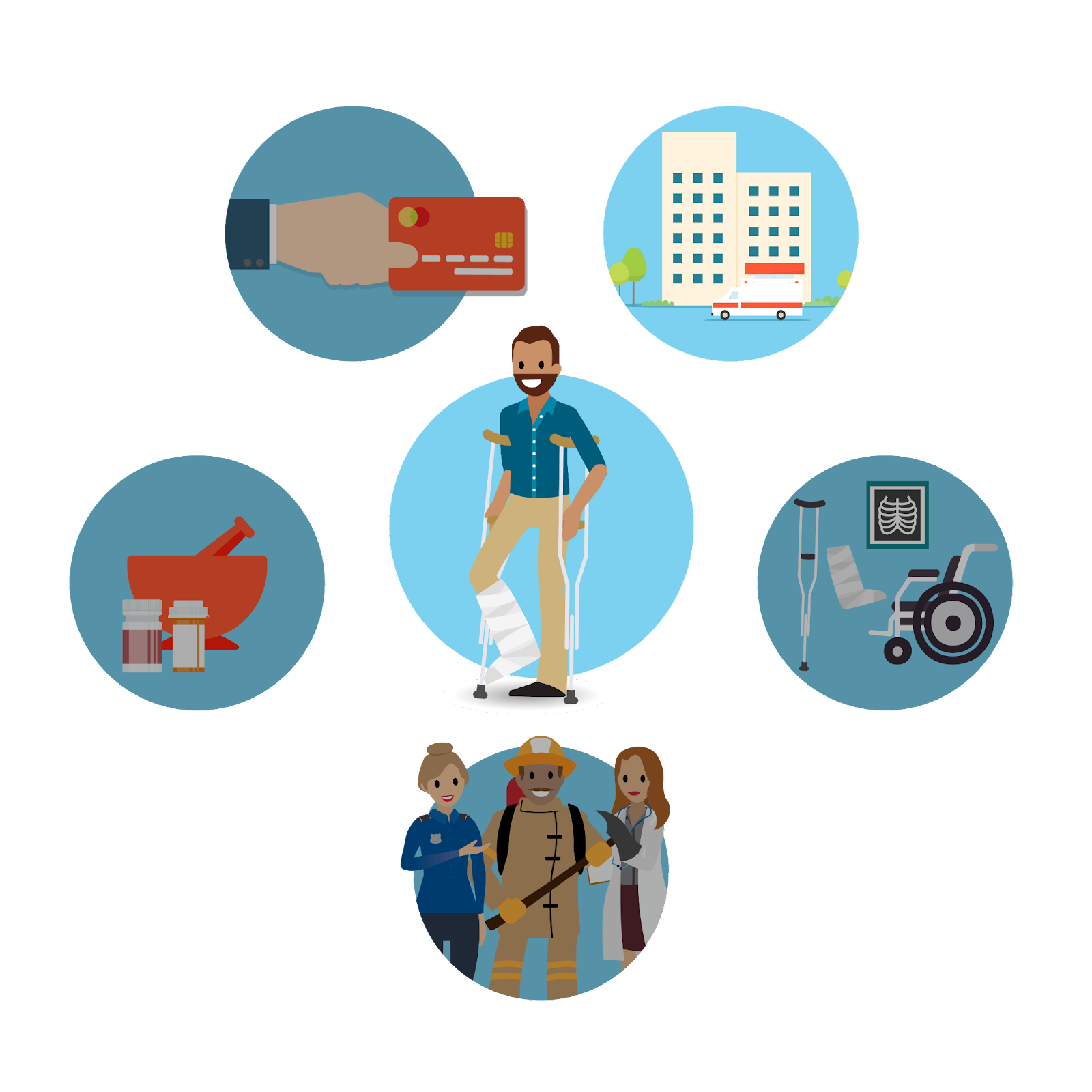Get to Know Provider Basics
Learning Objectives
After completing this unit, you’ll be able to:
- Define the provider’s role in healthcare.
- Identify the main business objectives of providers.
- Discuss key terms and regulations that impact providers.
Putting the Care in Healthcare
The healthcare sector that works with patients is called providers. All five healthcare industry sectors contribute to better patients.
- Providers
- Payers
- Pharmaceuticals
- MedTech
- Public Sector health

Healthcare refers to the industry. Healthcare means delivering care to people. For an overview on the primary aims, trends, and market sectors in healthcare and life sciences, check out the Healthcare and Life Sciences Industry: Quick Look.
Who Are the Providers?
Providers include the people who take care of patients and the facilities where patients are cared for.
People providers are who you think they are—doctors, nurses, physical therapists, and other clinical staff. These professionals provide preventive, curative, or rehabilitative healthcare services.
Provider facilities are things like hospitals, clinics, and skilled nursing facilities.
In fact, more people and organizations are considered providers than you think. Here are some of the less obvious ones.
People
- Radiologists
- Pharmacists
- Physical, speech, and occupational therapists
- Nurses
- Physician assistants (PA)
- Dentists
Facilities
- Ambulatory surgical centers
- Urgent care
- Rehabilitation centers
- Skilled nursing facilities
- Medical laboratories
- Imaging centers
What Providers Care About
Improving Patient Outcomes
A provider’s business objective is to improve a patient’s outcome, or the condition a patient is in at the end of treatment or therapy. This includes the degree of wellness and the need for continuing care, medication, or support. From testing and diagnosing to care planning and treatment, everything a provider does aims to improve the patient’s health and well-being.
Improving the Patient Experience
Some providers are stepping up in innovative ways. For example, a facility can have rooms equipped with electronic tablets that let patients control the room temperature, call a nurse, or watch a video about their diagnoses and treatments.
Reducing Cost
Patients and payers insist on reducing cost. To do this, providers focus on:
- Prevention
- Streamlined care delivery
- Increasing patient engagement
- Implementing new technologies, like telehealth
Virtual visits, remote patient monitoring, and telehealth improve follow-up care for chronically ill or post-surgical patients, reducing readmissions. Telehealth facilitates regular, convenient monitoring and caring for remote patients.
Terms for Healthcare Providers
Let’s revisit our intrepid dog walker, Alvin, from the Healthcare and Life Sciences Industry: Quick Look badge. Alvin took a tumble in a tangle of tongues and tails when the dogs he was walking went after a wayward squirrel. When Alvin gets to the hospital, he comes in contact with several healthcare providers. This includes nurses, a doctor, the x-ray tech, the hospital emergency room, a pharmacy, and his physical therapist. He learns many new terms while recovering from his broken leg.
To keep up with Alvin’s growing healthcare knowledge, let’s review some common terms used in the provider sector.
| Term | What It Is | Type of Care Example |
|---|---|---|
|
Acute care |
A short-term treatment for a severe injury or episode of illness, an urgent medical condition, or during recovery from surgery |
|
|
Ambulatory care |
A medical service performed without admission to a hospital or other facility |
|
|
Post-acute care |
A service that patients receive after, or in some cases instead of, a stay in an acute care hospital |
|
|
Specialty care |
A practice focused on providing a specific type of care |
|
This table only scratches the surface of provider terms—but it gives him a pretty good head start. Next, you (and Alvin) get acquainted with products, customers, and trends.
